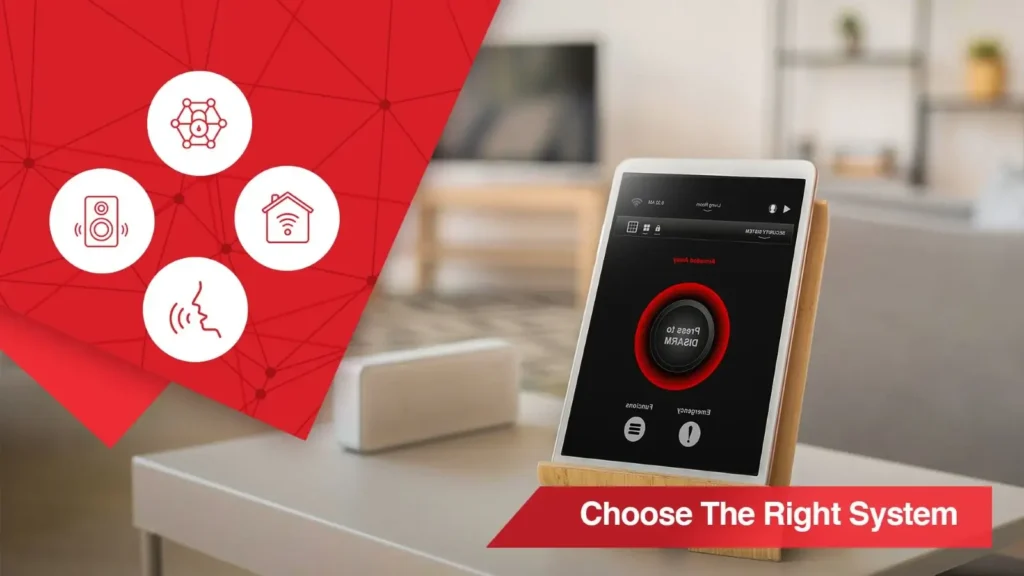
Smart homes are becoming a major part of modern life and are especially popular in the Arab world like UAE, Saudi Arabia, Qatar, Kuwait, and Bahrain. These systems offer control, comfort, and peace of mind, all from one place.
But with so many options on the market, choosing the right home automation system can feel confusing.
In this guide, we will help you make an informed decision based on real user experiences, expert advice, and practical thinking.
Basically home automation system connects your smart devices and allows them to work together through a single control point such as a mobile app, a wall-mounted panel, or a voice assistant like Alexa or Google Assistant.
With a right home automation system setup, you can easily control:
- Lights
- Fans
- ACs and thermostats
- Door locks and security alarms
- Smart TVs and appliances
- Cameras and motion sensors
Why Choosing the Right Home Automation System Matters
A wrong decision can turn your smart home dream into a daily frustration. Many users face unexpected issues simply because they choose cheap automation systems.
Here are the top 10 problems caused by selecting the wrong home automation system:
1. Device Compatibility Issues
Many systems only support a limited number of devices. Your smart plugs may work, but your smart bulbs or security cameras may not.
2. Poor Wireless Connectivity
If the system doesn’t support strong wireless protocols like Z-Wave or Zigbee, devices may lag, disconnect, or fail to respond.
3. High Setup and Maintenance Costs
You may end up paying extra for add-ons, adapters, professional installation, or troubleshooting services that weren’t needed with better systems.
4. Weak Security Standards
Low-grade systems often skip encryption or fail to update security patches. This puts your home at risk of hacking or data theft.
5. Limited Functionality
Some systems offer only basic features. You might not be able to create custom scenes, schedules, or automations—defeating the purpose of a smart home.
6. Complicated User Interface
Hard-to-navigate apps or control panels can make daily usage frustrating, especially for seniors or non-tech users.
7. Lack of Voice Assistant Support
Many low-end systems don’t work with Alexa, Google Assistant, or Siri—removing the ease of voice control.
8. No Offline Support
If your internet goes down, the system may stop working completely. You lose access to lights, locks, and cameras when you need them most.
9. No Room for Future Expansion
Some systems can’t grow with your needs. You might need to replace the entire setup just to add more devices.
10. Poor Customer Support or Product Discontinuation
Some brands vanish after a year or stop supporting products, leaving you with a system no one can help you fix.
Tip: Don’t let a poor system limit your home’s potential. Choose a scalable, secure, and user-friendly solution from trusted providers.
Step-by-Step Guide for Selecting Smart Home System
Let’s look at what matters when making the right choice.
1. Understand Your Needs First
Think about what you want your smart home to do. Ask yourself:
- Do I want to control lights and ACs remotely?
- Do I want better home security?
- Do I need a system that works with Alexa or Google Assistant?
- Do I want to start small and grow later?
Your needs decide your system—not the other way around.
2. Choose a System That Supports Multiple Devices
Not all systems support all brands or gadgets. Some only work with their own products. Based on industry surveys and user feedbacks we found that many people face issues when their smart home controllers don’t support a wide range of devices.
So choose systems that support:
- Z-Wave Plus
- Zigbee
- Wi-Fi
- Bluetooth
This makes it easier to add devices later.
3. Focus on Ease of Use
A good smart home system should be simple to set up and control. You shouldn’t need tech skills to automate your home.
Look for:
- Clean mobile apps
- Clear setup instructions
- Support guides or customer care
4. Look for Voice Assistant Integration
Controlling your devices through voice is a great feature. Choose systems that support:
- Amazon Alexa
- Google Assistant
- Apple Siri
You can just say, “Turn off lights,” or “Lock the door,” and it works instantly.
5. Check Wireless Communication Protocols
The backbone of your smart home is the network it runs on. A good system should support:
- Z-Wave Plus (low power, reliable)
- Zigbee (fast and secure)
- Wi-Fi (great for mobile apps)
- 3G/4G fallback for remote areas
6. Ensure Strong Security Features
Security should be your top concern. Make sure the system includes:
- Data encryption
- Two-factor login
- Firmware updates
- Secure cloud servers
7. Consider Scalability
Your needs may grow. Start with a few devices, but make sure the system supports more in the future.
Choose platforms that offer:
- Easy device additions
- Software updates
- Flexible options (indoor, outdoor, security, lights, etc.)
8. No Hidden Fees or Subscriptions
Some systems charge monthly to unlock features or access the cloud.
Look for:
- Free cloud access
- No locked features
- One-time cost with full access
9. Read Real User Reviews
Reviews on Amazon, Reddit, or forums give real insights.
Check for:
- Ease of installation
- App performance
- Customer support
- Device compatibility issues
Top Smart Home Controllers Mentioned by Users
| Brand | Highlights |
| Hogar | Z-Wave, Zigbee, Wi-Fi, app access, no subscription, cloud connect |
| SmartThings | Works well with third-party devices, stable system |
| Wink 2 | Easy to use, beginner-friendly |
| Loxone | Custom setups for different budgets |
| Home Assistant | Open-source, great for tech users, needs Raspberry Pi or PC |
| OpenHAB | Similar to Home Assistant, supports complex automations |
Wrapping Up:
Choosing the right home automation system is not about picking the most expensive one. It’s about selecting a solution that fits your home, your lifestyle, and your goals.
And if you were unsure where to start, our home automation installation services are here to guide you. We help you choose and install the best smart home systems that are secure, scalable, and user-friendly.


